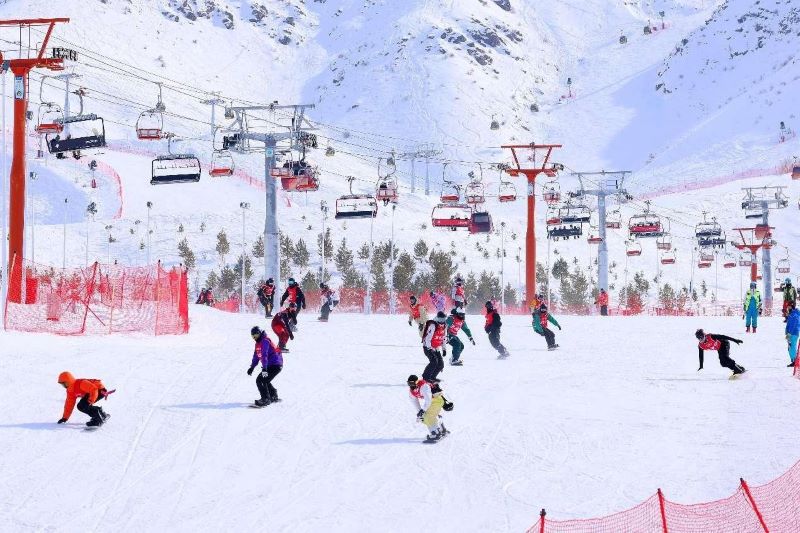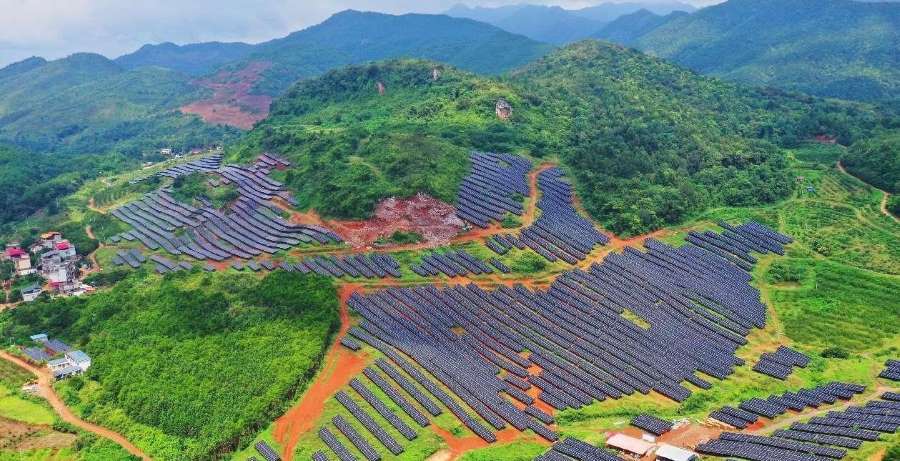China's ice, snow economy shows strong momentum

Agency : The ice and snow economy is characterized by a long industrial chain, significant spillover effects, and high social benefits.
In recent years, with the deepening promotion of the concept that abundant snow and ice provided by the climate are also invaluable assets, and China's continuous efforts to get 300 million people involved in winter sports, China's high-quality "cold resources" of ice and snow have accelerated their transformation into the "hot power" of economic development.
Recently, the Chinese government issued policy measures for stimulating the vitality of the ice and snow economy through the high-quality development of winter sports, which clearly state that the total scale of China's ice and snow economy will reach an economic scale of 1.2 trillion yuan (about $169 billion) by 2027, and1.5 trillion yuan by 2030.
The successful hosting of the Beijing 2022 Winter Olympics and Paralympics has driven the rapid development of ice and snow tourism, competition and performances, sports training, and ice and snow equipment manufacturing, fully demonstrating the strong momentum of the ice and snow economy.
Yang Xuedong, director of the Sports Economy Department of China's General Administration of Sport, said that sports events play a significant role in driving economic development, promoting consumption, and stimulating investment.
During the 14th National Winter Games held earlier in Hulun Buir, north China's Inner Mongolia autonomous region this year, Hulun Buir received a total of 1.774 million tourist visits, generating 32 billion yuan in sports and other consumption.
In recent years, winter tourism in China has been gaining popularity. It plays an important role in promoting winter consumption and driving economic growth.
According to data from the China Tourism Academy, the number of ice and snow tourists increased by 38 percent year on year during the last snow season, and revenues increased by 50 percent. Data from online travel companies showed that the total consumption of ice and snow tourism increased by 132.5 percent compared to the 2019-2020 snow season.
During the last snow season, an ice and snow fever swept across various regions in China. The booming tourism in Harbin, northeast China's Heilongjiang province gave a significant boost to local catering, accommodation, entertainment, and shopping industries. Harbin received over 87 million visitors, a 300 percent increase year on year, and reported tourism revenue of 124.8 billion yuan, a 500 percent increase.
Jilin province, which neighbors Heilongjiang province, received 125 million tourist visits, up 121 percent from a year ago. The province's tourism revenue surged 140 percent year on year to 241.9 billion yuan.
Altay in northwest China's Xinjiang Uygur autonomous region welcomed nearly 4.89 million visitors, a 36 percent increase year on year, and its tourism revenue reached 5.1 billion yuan, up 45.8 percent compared with that in the same period last year.
After the Beijing 2022 Winter Olympics and Paralympics, winter sports have received wider attention and been joined by more people across China.
Ice and snow equipment are the foundation for the development of winter sports and are also a crucial component of the ice and snow economy. Currently, China has developed a product system consisting of 15 major categories of ice and snow equipment, with the industry rapidly expanding and the technical quality of products steadily improving.
The number of enterprises in this field has grown from around 300 in 2015 to approximately 900 in 2023, and sales revenue from less than 5 billion yuan to around 22 billion yuan during the same period.
New technologies represented by 5G, artificial intelligence, and virtual reality have given rise to many new products and models, enhancing the overall sports experience.
For instance, the ski simulators utilize virtual reality technology to recreate real-life skiing scenarios, allowing users to experience skiing without leaving their homes.
Intelligent skiing insoles can collect data such as foot pressure, motion acceleration, and skiing paths. Heating snow sports shoes with flexible batteries and elastic heating elements can provide continuous heating for 2.5 to 5 hours in snow at temperatures as low as -25 degrees Celsius.
As future technologies further integrate with ice and snow equipment, they will better cater to diverse and personalized consumer demands.
Winter sports venues are essential infrastructure for the advancement of ice and snow sports. Driven by the Beijing Winter Olympics, the construction of ice and snow facilities in China has maintained rapid growth. In 2015, there were only over 700 ice and snow sports venues nationwide, and by the end of 2023, this number reached 2,847.
However, due to the relatively late start of China's ice and snow economy, there are not many high-quality ice and snow venues. The construction of outdoor sports camps is relatively lagging, and the supporting public service facilities are not yet perfect.
Peng Fuwei, head of the Department of Social Development under the National Development and Reform Commission, said that China will fully leverage the efforts of local governments and various sectors of society to enhance the level of supporting services for ice and snow venues.
-By Ji Fang, People's Daily













प्रतिकृया दिनुहोस